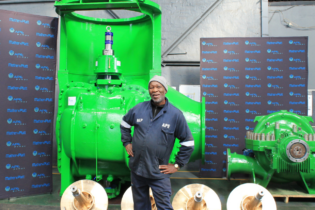A Pretoria Architectural Technologist and owner builder, Jan Minne, is currently completing his 400 m2 home constructed with recycled polystyrene.
Despite having built numerous residential and commercial building projects using the traditional brick and mortar over course of his career, Minne decided to use the Stumbelbloc building method which was developed by André Esterhuizen and Riedewaan Jacobs. Each block is pre-formed in a mould at a factory, and is equal in size to eight standard bricks. Once the walls are at roof-level, the cavity walls are filled with polystyrene regrind (chipped up waste polystyrene), that acts as an insulator. The building method allows a house to be built without electricity in the middle of nowhere and it acts like a ‘cold room’. You can produce the blocks and build a house entirely without even a kilowatt of electricity.One of polystyrene’s key attributes is its excellent insulation properties. “Polystyrene keeps hot food and beverages hot, and cold ones cold,” explains Adri Spangenberg, Director of the Polystyrene Packaging Council. In addition the system puts these inherent qualities to good use by using recycled polystyrene in its construction projects. “Polystyrene’s thermal properties, when used in construction, are extraordinary,” confirms Minne.
As the blocks are modular, the entire building process is simplified and therefore faster. “I have saved a lot of money with the plastering, for example, because the blocks are straight and self-aligning and self-levelling. “With the traditional way of building, the task of fitting electricity conduits and water pipes in a new building after the walls are built is often arduous, messy, time consuming and expensive. However, because the cavities in the walls are kept empty until after the power plugs and plumbing have been installed, it is a much easier and quicker process. You can decide exactly where you want your power plugs and points,” explains Minne.







